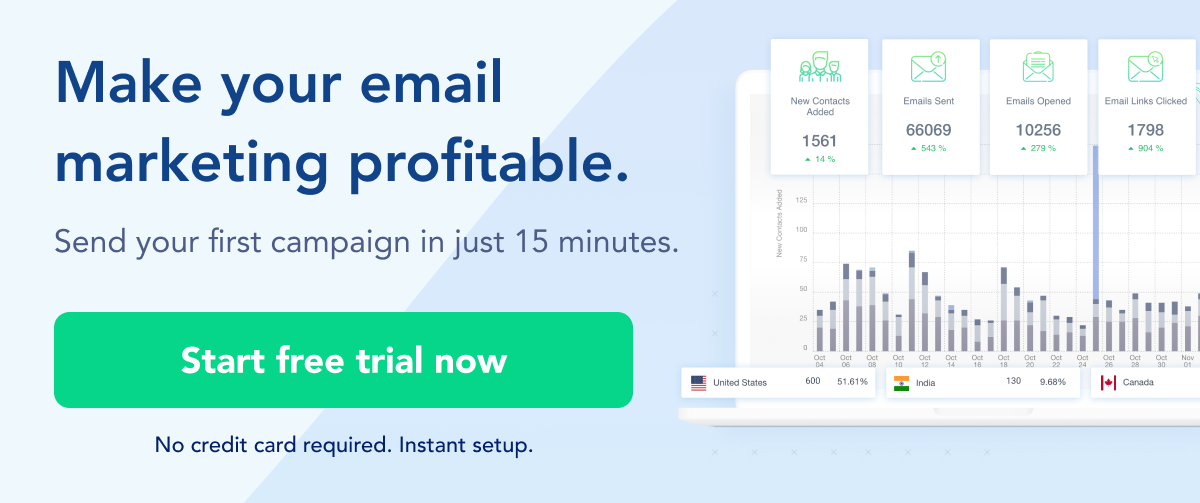
The Role of Email Marketing in Account-Based Marketing
Account-Based Marketing (ABM) is a strategic approach that focuses on creating personalized experiences for high-value accounts. It is a tailored approach that aligns sales and marketing efforts to engage and convert specific target accounts. ABM allows companies to maximize their resources and efforts on accounts that are most likely to convert, thereby increasing ROI.
Email marketing is a fundamental component of ABM. In this article, we will explore the role of email marketing in ABM, including best practices and how companies are using ABM. Specifically, we will discuss the benefits of account-based email marketing, how to create effective email campaigns for ABM, and the importance of tracking and analyzing data.
Table of Contents
Benefits of Account-Based Email Marketing
Account-Based Email Marketing (ABEM) is the practice of sending targeted emails to specific individuals within a target account. ABEM is a crucial component of Account-Based Marketing (ABM) as it allows marketers to personalize their messaging and content to specific individuals, increasing the likelihood of conversion.
Implementing ABEM in your pitch deck strategy can help you create highly tailored messages that resonate with your target accounts, ultimately increasing your chances of success when pitching your ideas or products to potential investors or clients. Here are some of the benefits of ABEM:
1. Increased Engagement: By tailoring emails to specific individuals within a target account, marketers can increase engagement rates. According to ReadyContact, Vidyard, a video marketing platform, has utilized personalized video in its ABM campaign to achieve a remarkable 63% increase in engagement. The campaign involved creating personalized emails and landing pages, alongside personalized videos crafted for each specific account.Image Source - Vidyard
By delivering customized messages that catered to the individual needs of the target audience, Vidyard was able to achieve significant results. The use of personalized videos proved to be an effective strategy that resonated with the audience and drove higher engagement rates.
Vidyard's successful ABM campaign serves as a prime example of the power of personalization in driving higher engagement and ultimately, greater ROI.
2. Higher Conversion Rates: ABEM allows marketers to create targeted messaging that resonates with the specific pain points and challenges of their target accounts. This approach can lead to higher conversion rates. In fact, according to the Alterra Group, 97% of marketers reported higher ROI with ABM than with any other marketing strategy.Qlik, a cloud-based platform for data integration and analytics, was facing difficulty in handling an overwhelming pipeline of leads as they were treating all of them the same. To improve their lead management, they adopted an Account-Based Marketing (ABM) strategy and implemented a more efficient lead scoring system. As a result, leads scored A or B saw 2-3 times higher conversion rates than the average.
Additionally, Qlik witnessed a 30-40% decrease in the amount of time spent on sorting and following up with leads. These impressive results demonstrate the power of ABM in prioritizing high-value leads and personalizing marketing efforts to maximize conversion rates and streamline the sales process.
Image Source - Qlik
3. Improved Customer Retention: ABEM can also be used to engage existing customers with personalized content that aligns with their needs and interests. By providing ongoing value through targeted email campaigns, companies can improve customer retention rates and increase customer lifetime value.Creating Effective Email Campaigns for ABM
To create effective email campaigns for ABM, marketers must take a strategic approach. Here are some best practices to follow:
1. Account-Based Advertising: Account-based advertising is a complementary approach to ABEM that allows you to deliver highly targeted and personalized messages across multiple channels. By leveraging account-based advertising, you can amplify the reach of your ABEM campaigns and reinforce your message across various touchpoints, such as social media or display ads.
2. AI and Machine Learning: AI and machine learning can help you automate much of the personalization process and deliver highly tailored messages at scale. By analyzing recipient data and behavior, AI and machine learning can help you deliver more relevant and personalized messages that resonate with your target accounts.
3. Multi-Touch Campaigns: Multi-touch campaigns involve delivering personalized messages across multiple touchpoints and channels. By using a multi-touch approach, you can ensure that your message is consistently reinforced and tailored to the individual recipient.
For instance, you can use blue shades in your email design to create a cohesive and visually appealing message that resonates with your target audience. This approach can help to increase engagement rates and ultimately, drive more conversions.
4. Metrics and Analytics: Metrics and analytics are critical to tracking the success of your ABEM campaigns. By monitoring key performance indicators such as open rates, click-through rates, and conversion rates, you can measure the effectiveness of your campaigns and identify areas for improvement. Use this data to refine your approach and optimize future campaigns.
5. Dynamic Content: Dynamic content involves creating and delivering personalized content based on the recipient's behavior and preferences. By using dynamic content in your ABEM campaigns, you can create highly personalized messages that are tailored to the individual recipient's interests and needs. This can help to increase engagement rates and drive more conversions.
Using an infographic maker can help you create dynamic and visually appealing content that resonates with your target audience. Infographics can help to convey complex information in a simple and engaging way, making them a great addition to your ABEM campaigns. By incorporating dynamic and visually appealing content in your ABEM campaigns, you can capture your audience's attention and increase the chances of conversion.
6. Account-Based Retargeting: Account-based retargeting involves delivering personalized messages to individuals who have interacted with your brand or website in the past. By using account-based retargeting in your ABEM campaigns, you can deliver highly personalized messages to individuals who are already familiar with your brand, increasing the likelihood of conversion. This approach can help to reinforce your message and drive more revenue for your business.
7. Use Social Media for Account Research: Social media can be a powerful tool for conducting research on target accounts and individuals. By following target accounts and key decision-makers on social media platforms like LinkedIn, Twitter, and Facebook, you can gain insights into their interests, pain points, and behavior patterns. This information can help you craft more personalized messages and content for your ABEM campaigns.
8. Incorporate Interactive Content: Interactive content, such as quizzes, surveys, and assessments, can be a great way to increase engagement with your target accounts and provide them with value. Interactive content allows you to gather data on the recipient's behavior and preferences, which can be used to tailor future messages and content. Additionally, interactive content can help to differentiate your ABEM campaigns and make them more memorable for your target accounts
Tracking and Analyzing Data
Tracking and analyzing data is crucial to the success of ABM and ABEM. Here are some key metrics to track:
- Open Rates: Track the open rates of your emails to understand how many people are engaging with your content.
- Click-Through Rates: Track click-through rates to understand how many people are taking action based on your email content.
- Conversion Rates: Track conversion rates to understand how many people are taking the desired action, such as filling out a form or making a purchase.
- Engagement Rates: Track engagement rates, including time spent on the website, to understand how engaged your target accounts are with your content
- ROI: Track your ROI to understand the overall effectiveness of your ABEM campaigns.
- A/B Testing: Conduct A/B testing on your email campaigns to understand what messaging and content resonates best with your target accounts.
Image Source - Freepik
By tracking and analyzing these metrics, marketers can optimize their ABEM campaigns and improve overall ROI.
Some Companies that Use Account-Based Email Marketing
To better understand how ABEM works in practice, let's explore how some companies are using it:
- Terminus: Terminus is a B2B marketing platform that specializes in ABM. Their ABEM campaigns focus on personalizing content for specific individuals within target accounts. They use data and insights to craft personalized messages that resonate with their target accounts, resulting in higher engagement rates and conversion rates.
Image Source - Terminus
2. Adobe: Adobe's ABEM campaigns focus on providing ongoing value to existing customers. They send targeted emails with tips and best practices for using their software, helping to improve customer retention rates and increase customer lifetime value.Image Source - Adobe
3. Marketo: Marketo's ABEM campaigns focus on educating prospects about their product offerings. They send targeted emails to specific individuals within target accounts, highlighting the benefits and value of their products.Image Source - Webfx
Conclusion
Account-Based Email Marketing is a crucial component of ABM. By tailoring email campaigns to specific individuals within target accounts, marketers can increase engagement rates, improve conversion rates, and provide ongoing value to existing customers. To create effective ABEM campaigns, marketers must take a strategic approach, including identifying target accounts, developing personas, crafting personalized messages, and tracking and analyzing data.
Creating a flow chart of the entire ABEM campaign can help to ensure that each step is properly aligned with the overall strategy and goals. By following these best practices and learning from the way companies are using it these days, marketers can optimize their ABEM campaigns and drive ROI.



